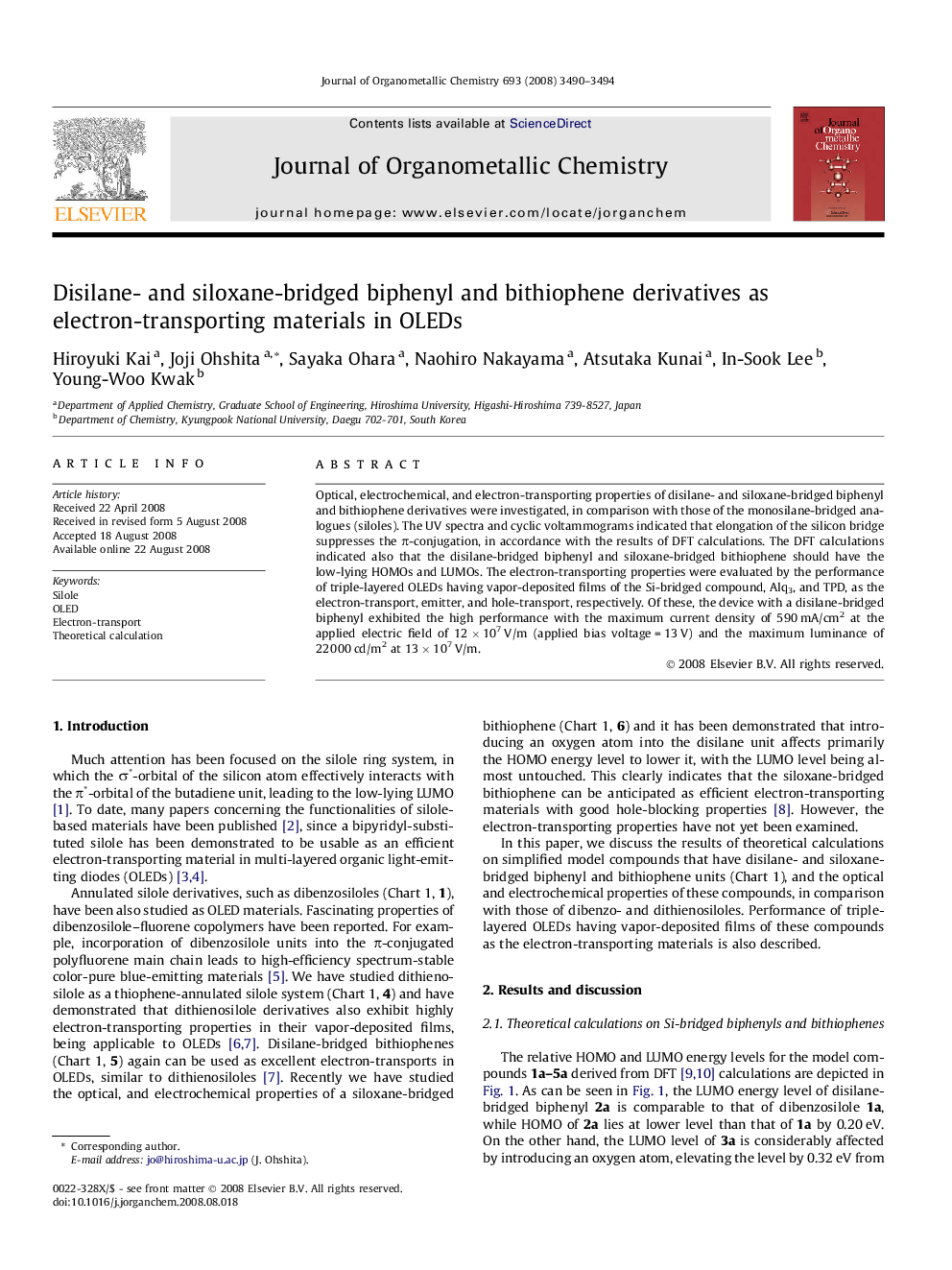| Article ID | Journal | Published Year | Pages | File Type |
|---|---|---|---|---|
| 1326926 | Journal of Organometallic Chemistry | 2008 | 5 Pages |
Optical, electrochemical, and electron-transporting properties of disilane- and siloxane-bridged biphenyl and bithiophene derivatives were investigated, in comparison with those of the monosilane-bridged analogues (siloles). The UV spectra and cyclic voltammograms indicated that elongation of the silicon bridge suppresses the π-conjugation, in accordance with the results of DFT calculations. The DFT calculations indicated also that the disilane-bridged biphenyl and siloxane-bridged bithiophene should have the low-lying HOMOs and LUMOs. The electron-transporting properties were evaluated by the performance of triple-layered OLEDs having vapor-deposited films of the Si-bridged compound, Alq3, and TPD, as the electron-transport, emitter, and hole-transport, respectively. Of these, the device with a disilane-bridged biphenyl exhibited the high performance with the maximum current density of 590 mA/cm2 at the applied electric field of 12 × 107 V/m (applied bias voltage = 13 V) and the maximum luminance of 22 000 cd/m2 at 13 × 107 V/m.
Graphical abstractElectron transporting properties of Si-bridged biphenyl and bithiophene were evaluated by the performance of triple-layered OLEDs. The device with a disilane-bridged biphenyl exhibited the high performance with the maximum luminance of 22 000 cd/m2 at the bias voltage of 13 V.Figure optionsDownload full-size imageDownload as PowerPoint slide
